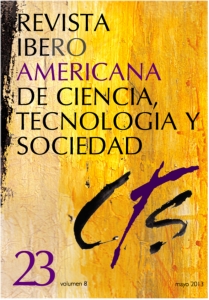Deepening in the understanding of Brazilian Living Labs
DOI:
https://doi.org/10.52712/issn.1850-0013-650Keywords:
technological innovation, social innovation, user-centered innovation, open innovationAbstract
Living Labs’ movement began in Brazil in 2009. By 2012, twelve Brazilian Living Labs had already been integrated to the European network of Living Labs (ENoLL). This article presents the panorama of this particular set of Living Labs. Among the twelve Living Labs, nine of them already existed, wholly or partly, acting as Living Labs before their affiliation to ENoLL, and three of them were projects created with ENoLL’s approval. Motivational factors for applying for ENoLL made it possible for these Living Labs to get access to knowledge and international resources. Brazilian Living Labs are more oriented to social innovation than to business innovation. However, in what refers to their activities and results, there is a balance between technological and social innovation. The main challenges faced by them, according to their coordinators, are the lack of specific resources for this type of initiative and the isolation in relation to other Living Labs. The fact that nine of them already existed before ENoLL’s affiliation leads to deduce the existence of other initiatives that are already underway. Identifying those initiatives and disseminating the concept and methodology of Living Labs throughout the country might be an important strategy to overcome the challenges targeted.
Downloads
References
ANPROTEC (2006): Evolução do movimento brasileiro de incubadoras.
BEAMISH, E.; McDADE, D.; MULVENNA, M.; MARTIN, S. y SOILEMEZI, D. (2012): Better together: the TRAIL user participation tool kit for Living Labs, Ulster, TRAIL Living Lab, University of Ulster.
CHESBROUGH, H. W. (2003): The era of open innovation, Sloan Management Review, vol. 44, nº 3, pp. 35-41.
DAHLANDER, L. y GANN, D. M. (2010): “How open is innovation?”, Research Policy, vol. 39, nº 6, pp. 699-709.
DOSI, G. (1982): “Technological paradigms and technological trajectories: A suggested interpretation of the determinants and directions of technical change”, Research Policy, vol. 11, nº 3, pp. 147-162.
ERIKSSON, M.; NIITAMO VELI, P. y KULKKI, S. (2005): “State-of-the-art in utilizing Living Labs approach to user-centric ICT innovation—an European approach”. Technology, vol.1, nº 13, pp. 1-13.
ETZOKOWITZ, H. y LEYDESDORFF, L. (1995): “The Triple Helix-University-Industry- Government relations: a laboratory for knowledge-based economic development”, EASST Review, vol. 14, nº 1, pp. 14-19.
ETZOKOWITZ, H. y LEYDESDORFF, L. (2000): “The dynamics of innovation: from National Systems and ‘Mode 2’ to a Triple Helix of university–industry–government relations”, Research Policy, vol. 29, nº 2, pp. 109-123.
FREEMAN, C. (1987): “Technology policy and economic performance: lessons from Japan”, Londres, Printer Publisher.
GARCIA, A. S. y Oliveira, A. D. (2008): “Living Labs no contexto da inovação tecnológica”.
MARKOPOULOS, P. y RAUTERBERG, G. W. M. (2000): “LivingLab: A white paper”, Annual Progress Report, vol. 35, pp. 53-65, IPO.
NELSON, R. E. (1993): National innovation systems: a comparative study, Nueva York, Oxford University Press.
OECD (2010): “Social entrepreneurship and social innovation”, SMEs, entrepreneurship and innovation, pp. 185-216.
OLIVEIRA, A. D. (2011): Workshop InovAmazonas.
SCHUMPETER, J. A. (1985): Teoria do desenvolvimento econômico: uma investigação sobre lucros, capital, crédito, juro e o ciclo econômico, São Paulo, Nova Cultural.
SERRA, A. (2010): “Citilabs: ¿Qué pueden ser los laboratorios ciudadanos?”, Revista La Factoría, vol. 45-46.
TIDD, J.; BESSANT, J. y Pavitt, K. (1997): Managing innovation: integrating technological, market and organizational change, Chichester, John Wiley.
VON HIPPEL, E. (2007): Horizontal innovation networks by and for users, Ind. Corp. Change, vol. 16, nº 2, pp. 293-315.
Downloads
Published
How to Cite
Issue
Section
License
Copyright (c) 2024 CC Attribution 4.0

This work is licensed under a Creative Commons Attribution 4.0 International License.
All CTS's issues and academic articles are under a CC-BY license.
Since 2007, CTS has provided open and free access to all its contents, including the complete archive of its quarterly edition and the different products presented in its electronic platform. This decision is based on the belief that offering free access to published materials helps to build a greater and better exchange of knowledge.
In turn, for the quarterly edition, CTS allows institutional and thematic repositories, as well as personal web pages, to self-archive articles in their post-print or editorial version, immediately after the publication of the final version of each issue and under the condition that a link to the original source will be incorporated into the self-archive.











